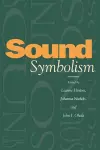
Sound Symbolism
3 contributors - Paperback
£36.99
Melissa Barkat-Defradas obtained her Ph.D. in Forensic Linguistics at the University of Lyon in 2000 and received the Young Researcher Award for her work in Automatic Language Identification. After a research fellowship at UC Berkeley, she joined the French National Centre for Scientific Research. She is now a full-time Researcher at The Institute of Evolutionary Sciences of Montpellier (France), where she actively contributes to developing interdisciplinary research by bridging the gap between experimental phonetics and evolutionary biology. She is particularly interested in the selective forces that may explain the emergence of articulated language in humans. Benjamin Weiss received his PhD in 2008 in phonetics from Humboldt-University Berlin. Since then he has extensively studied acoustic correlates of pleasant and likable voices, taking into account also speaking styles and conversational behavior in order to build quantitative models. He was visiting fellow at the University of Western Sydney and the University of Technology Sydney. In 2019, he completed his habilitation on human dialog and speech-based (multimodal) HCI. Since September 2020, he is Associate Professor at the School of Intelligence, Hanyang University, Seoul. Jürgen Trouvain received his Ph.D. in Phonetics in 2004 from Saarland University (Germany), where he works as a Senior Researcher and Lecturer at the Department of Language Science and Technology. His research fields include non-verbal vocalizations such as breathing and laughing, as well as non-native speech and phonetic learner corpora. He has acted as an organizer for several international conferences and workshops. John J. Ohala is an Emeritus Professor of Linguistics at the University of California, Berkeley, and a Research Scientist at the International Computer Science Institute, Berkeley. He has had a major impact on the field of speech communication. His research interests focus on experimental phonology and phonetics and ethological aspects of communication, including speech perception, sound change, phonetic and phonological universals, psycholinguistic studies in phonology, and sound symbolism. He proposed an innovative ethological hypothesis, which unifies — via ‘the frequency code’ — such diverse behavioral phenomena as the cross-language use of voice pitch for questions and statements, the systematic use of consonants, vowels, and tones in sound symbolical vocabulary, the ‘smile,’ and sexual dimorphism of the vocal anatomy in adult humans